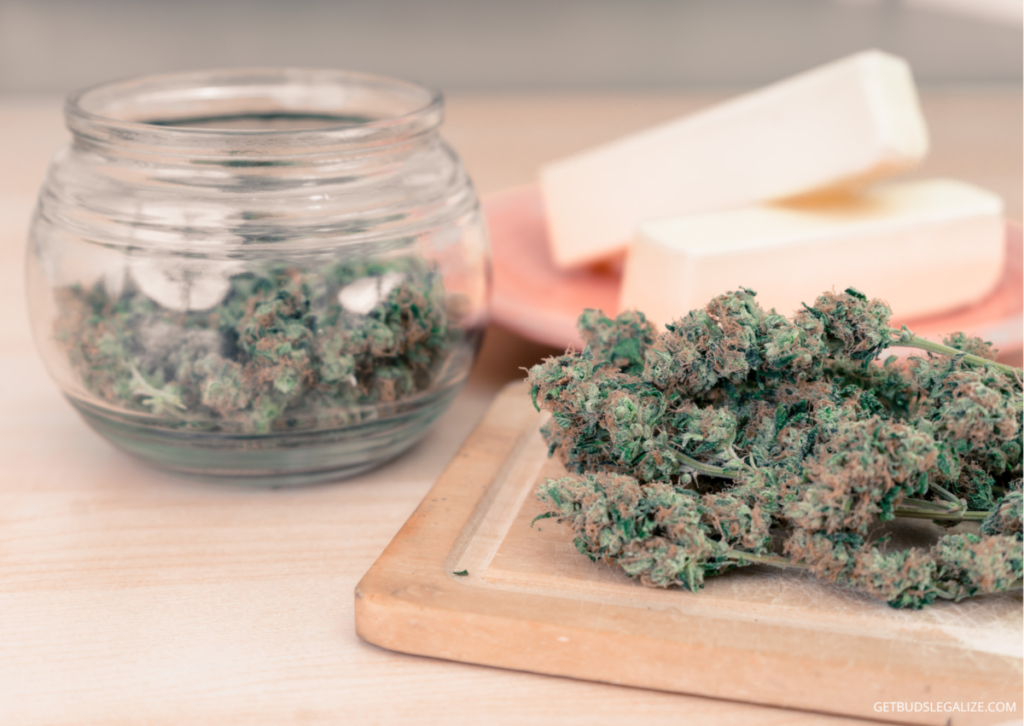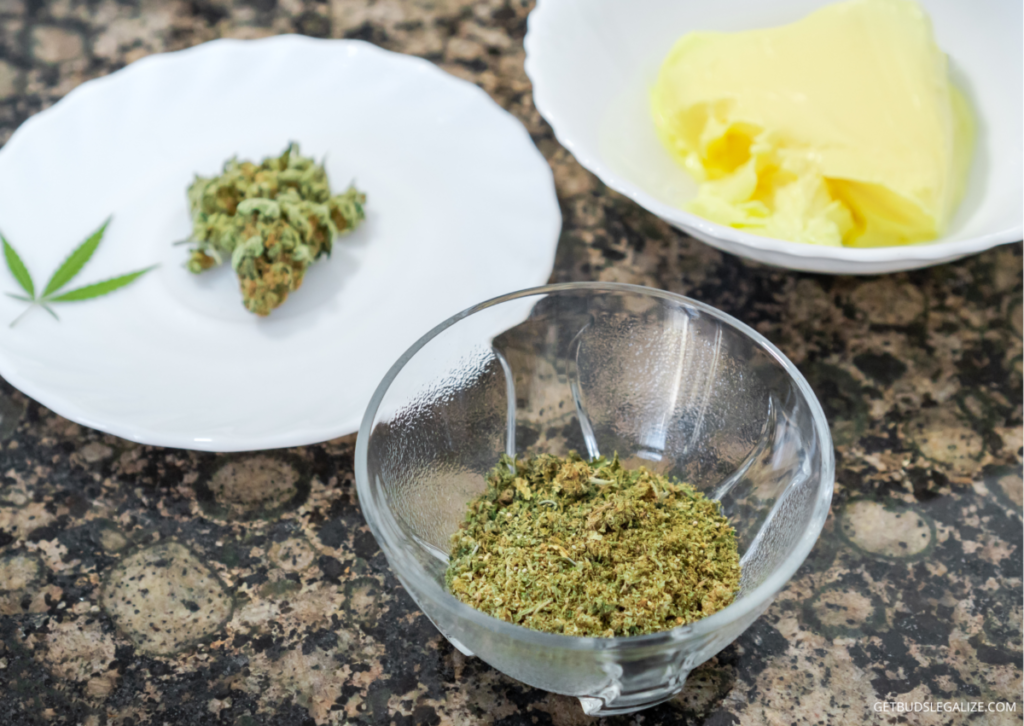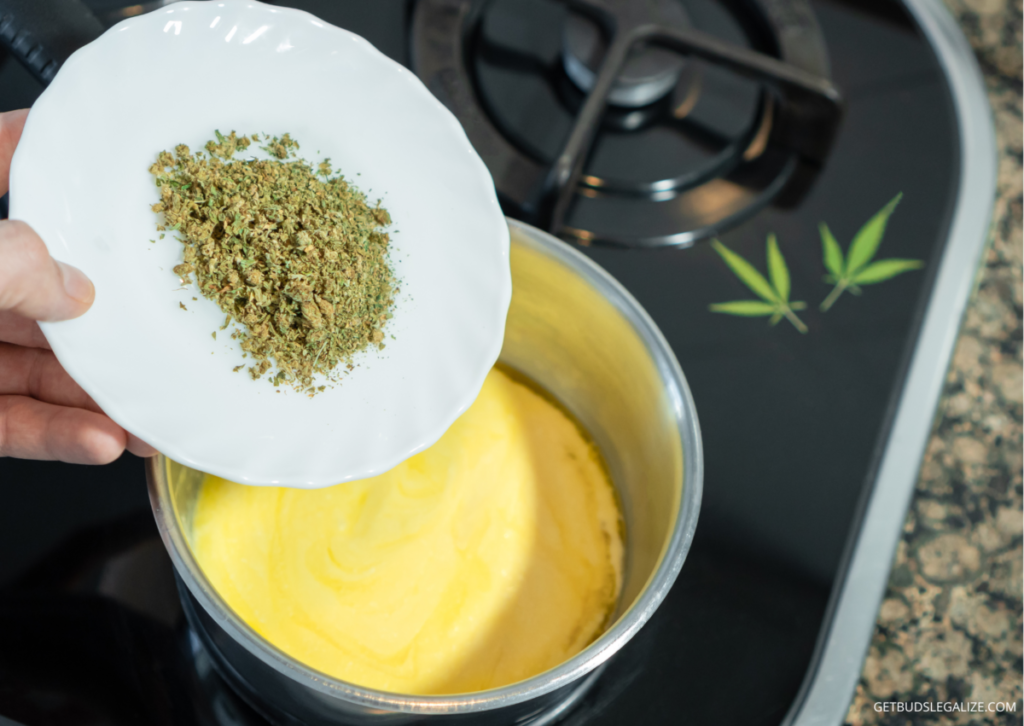How to Make THC Coconut Oil: A Complete Guide for Cannabis Lovers
Coconut oil is one of the most versatile and healthy oils you can use in your kitchen. It has a high smoke point, which makes it ideal for frying and baking, and it contains medium-chain triglycerides (MCTs), which are easily absorbed by the body and provide energy and brain fuel. Coconut oil also has antibacterial, antifungal, and anti-inflammatory properties, which can benefit your skin, hair, and immune system.
But did you know that coconut oil can also be infused with cannabis to create a potent and delicious edible? THC coconut oil is a simple and effective way to enjoy the benefits of both cannabis and coconut oil, whether you want to relieve pain, reduce stress, or enhance your mood.
In this blog post, we will show you how to make THC Coconut Oil at home, using either fresh or decarboxylated weed. We will also give you some tips on how to choose the right coconut oil for your weed infusion, and how to use cannabis coconut oil in various ways.
Choosing the Right Coconut Oil for THC Infusion
Before you start making your THC coconut oil, you need to choose the right type of coconut oil for your needs. There are two main types of coconut oil to choose from: unrefined and refined.
Refined coconut oil is processed to remove the coconut flavor and aroma, as well as any impurities. It has a neutral taste and smell, which makes it suitable for cooking with cannabis, as it will not overpower the flavor of your weed. Refined coconut oil also has a higher smoke point than unrefined coconut oil, which means it can withstand higher temperatures without burning.
Unrefined coconut oil, on the other hand, is minimally processed and retains the natural flavor and aroma of coconut. It has a lower smoke point than refined coconut oil, which means it can burn easily if exposed to high heat. However, unrefined coconut oil has more nutrients and antioxidants than refined coconut oil, which can enhance the health benefits of your cannabis infusion.
The choice between refined and unrefined depends on your personal preference and how you plan to use it. If you want a more discreet and versatile edible, go for a refined one. If you want a more flavorful and nutritious edible, go for unrefined.
How to Make THC Coconut Oil Step by Step

Making cannabis-infused coconut oil is easy and requires only a few ingredients and materials.
You Will Need:
- Coconut oil (unrefined, refined, or MCT)
- Cannabis (flower, trim, or shake)
- A grinder
- A baking sheet
- An oven
- A slow cooker or a double boiler
- A cheesecloth or a fine mesh strainer
- A glass jar or a container
The amount of coconut oil and cannabis you use depends on how potent you want your THC coconut oil to be. A general rule of thumb for a coconut oil recipe is to use one cup of coconut oil for every 7-10 grams of cannabis. However, you can adjust this ratio according to your preference and tolerance.
If you are using fresh cannabis, you will need to decarboxylate it first before infusing it with coconut oil. Decarboxylation is a chemical process that occurs when cannabis is exposed to heat. This converts the inactive compounds in the plant, such as THCA and CBDA, into active ones, such as THC and CBD. These cannabinoids are responsible for the effects of cannabis on the body and mind.
To Decarboxylate Cannabis, Follow These Steps:

1. Preheat your oven to 240°F (115°C). This is the optimal temperature for decarboxylation, as it preserves the terpenes and flavonoids that give cannabis its aroma and flavor.
2. Grind your cannabis buds using a grinder or scissors. You want to achieve a coarse texture, not too fine or too chunky. This will ensure even heating and decarboxylation of the cannabis.
3. Spread the chopped cannabis evenly on a baking sheet lined with parchment paper. Make sure there are no clumps or gaps in the layer of cannabis.
4. Bake the cannabis for 25-30 minutes, stirring occasionally. The cannabis will turn from green to brown as it decarboxylates. You may notice a strong smell during this process, so you may want to ventilate your kitchen or use an air filter.
5. Let the cannabis cool down before using it for your infusion. You can store the decarboxylated cannabis in an airtight container for up to six months.
If you are using decarboxylated cannabis, you can skip this step and proceed with the infusion.
To Infuse Your Coconut Oil with Cannabis, Follow these Steps:

1. Grind your cannabis buds into small pieces using a grinder or a sharp knife. This will help release the cannabinoids and terpenes from the plant material and make them more soluble in the oil.
2. Place the ground cannabis in a glass jar and add enough coconut oil to cover it completely. You can use any type of coconut oil, but virgin or refined oil will have a milder flavor and aroma than unrefined oil.
3. Seal the jar tightly and place it in a pot of simmering water over low heat. Make sure the water level is below the lid of the jar to prevent any moisture from getting into the oil. This method is called a double boiler and it will gently heat the oil and cannabis without burning them.
4. Let the jar simmer for 2 to 3 hours, shaking it occasionally to mix the oil and cannabis. The longer you simmer, the more potent your infused oil will be, but be careful not to overcook it as that may degrade some of the cannabinoids and terpenes.
5. Strain the oil through a cheesecloth or a fine mesh strainer into another glass jar. Squeeze out as much oil as possible from the cannabis material, but be careful not to burn yourself as the oil will be very hot.
6. Store the cannabis-infused coconut oil in an airtight container in a cool and dark place. Use it as you would use regular coconut oil for cooking, baking, or topical applications. Remember that your infused oil will have psychoactive effects if you consume it orally, so start with a small dose and adjust accordingly.
Your THC coconut oil is ready to use!
How to Store THC Coconut Oil Correctly?

Coconut oil can be stored at room temperature or in the refrigerator, depending on your preference and climate. Coconut oil has a melting point of 76°F (24°C), which means it will be solid below this temperature and liquid above it.
- If you live in a warm or humid place, you may want to store your coconut oil in the fridge to prevent it from melting or going rancid.
- If you live in a cool or dry place, you may want to store your coconut oil at room temperature to keep it soft and easy to use.
Coconut oil can last up to two years if stored properly in a sealed container away from direct sunlight and heat sources.
How to Use Cannabis Coconut Oil?
There are many ways to use it in your daily life. Here are some ideas:
• Cannabis Edibles Recipes with Coconut Oil
One of the most popular ways to use cannabis infused coconut oil is to make edibles with it. You can substitute THC coconut oil for regular butter or oil in any recipe that calls for it, such as cookies, brownies, cakes, muffins, pancakes, etc. Just be careful with the dosage and start with a small amount until you find your sweet spot.
• Other Ways to Use Cannabis-Infused Coconut Oil
Besides edibles, you can also use cannabis coconut oil in other ways. Here are some examples of how you can enjoy its benefits:
- Make your own bulletproof coffee or tea by blending cannabis oil with your favorite hot beverage. This will give you a burst of energy and a calm mood.
- Create your own cannabis salad dressing by whisking infused canna oil with vinegar, lemon juice, salt, pepper, and herbs. This will add some flavor and nutrition to your greens.
- Whip up a cannabis-infused honey or maple syrup by heating cannabis-infused oil and your preferred sweetener in a saucepan. This will make a delicious topping for pancakes, waffles, or oatmeal.
- Relax your muscles and soothe your aches by using cannabis-infused oil as a massage oil or lotion. This will help you relieve stress and inflammation.
- Improve your skin health by applying it directly to your skin. This will help you treat various skin issues such as acne, eczema, psoriasis, or dryness.
- Spice up your love life by using cannabis oil as a lubricant. It can enhance your sensations and intimacy by increasing blood flow and relaxing your muscles.
The possibilities are endless!
How Do I Calculate the Potency of My Batch?

To find out how potent your batch is, you need to know the percentage of CBD (or THC) in the flower you bought from the dispensary. Different strains have different levels of cannabinoids, so check the label or ask the staff for this information. For this recipe, you will need ¼ oz (or ~7g) of flower.
The formula to calculate the potency of your batch is (percentage of CBD or THC) x (amount of flower in grams) x 1000 / (number of servings). For example, if you use a strain with 15% CBD, 7g of flour, and make 20 gummies, the potency of each gummy would be (0.15) x (7) x 1000 / (20) = 52.5 mg of CBD per gummy. Remember to adjust the formula if you use a different amount of flowers or make a different number of servings.
You can also use online calculators to help you with this math. Here is one that I like: Free Edibles Dosage Calculator (Calculate THC, CBD, and CBG) (wakeandbake.co). Just enter the values and get the result.
How to Dose THC Coconut Oil?
Dosing coconut canna oil depends on several factors, such as your tolerance, metabolism, body weight, and desired effects. It is recommended to start low and go slow when consuming THC coconut oil, especially if you are new to edibles or have a low tolerance.
A general guideline is to start with 5 mg of THC per serving and wait at least two hours before taking more. You can use an online calculator or a lab test result to estimate the potency of your THC coconut oil based on the amount of cannabis and coconut oil you used.
What Are the Possible Side Effects of THC Coconut Oil?
Coconut canna oil can have some side effects if consumed in excess or by sensitive individuals. Some of the common side effects are:
- Dry mouth
- Dry eyes
- Drowsiness
- Dizziness
- Anxiety
- Paranoia
- Increased heart rate
- Impaired memory
- Impaired coordination
To avoid or minimize these side effects, it is important to dose carefully, stay hydrated, avoid mixing with alcohol or other drugs, and have some CBD on hand to counteract the psychoactive effects of THC if needed.
Conclusion
THC coconut oil is a simple and effective way to enjoy the benefits of both cannabis and coconut oil. It is easy to make at home with just a few ingredients and materials. You can use it in various ways depending on your preference and needs.
We hope this guide has helped you learn how to make THC coconut oil at home. Remember to always consume responsibly and consult your doctor before using cannabis if you have any medical conditions or are taking any medications.
Have fun experimenting with THC coconut oil!
FAQs
THC coconut oil has many benefits for health and wellness. It can help reduce inflammation, pain, nausea, anxiety, insomnia, and seizures. It can also improve mood, appetite, skin health, and immune system function.
THC coconut oil contains healthy fatty acids that are easily absorbed and metabolized by the body, providing an immediate source of energy and enhancing the effects of cannabis.
Coconut oil is a type of vegetable oil that is extracted from the flesh of mature coconuts. There are different methods of making coconut oil, such as cold-pressing, expeller-pressing, or refining.
Cold-pressed coconut oil is made by pressing fresh coconut meat without heat, resulting in a pure and unrefined oil that retains the natural flavor and aroma of coconut.
Expeller-pressed coconut oil is made by applying heat and pressure to dried coconut meat, producing a higher yield of oil but with less flavor and nutrients.
Refined coconut oil is made by further processing expeller-pressed or cold-pressed coconut oil to remove impurities, odor, and color, making it suitable for high-heat cooking or baking.
Coconut oil has many benefits for health and beauty, such as:
- It contains medium-chain triglycerides (MCTs), which are fatty acids that are easily digested and used by the body for energy and metabolism.
- It has antibacterial, antiviral, and antifungal properties that can help fight infections and boost immunity.
- It can moisturize and nourish the skin, hair, and nails, as well as prevent dryness, cracking, and dandruff.
- It can improve cholesterol levels and heart health by increasing HDL (good) cholesterol and lowering LDL (bad) cholesterol.
- It can support brain function and memory by providing ketones, which are alternative fuel sources for the brain.
Coconut oil can be used in cooking in various ways, such as:
- As a substitute for butter or other oils in baking, frying, sautéing, or roasting. Coconut oil has a high smoke point of 350°F (177°C), which means it can withstand high temperatures without burning or breaking down.
- As a base for sauces, dressings, marinades, or dips. Coconut oil can add a creamy texture and a subtle sweetness to savory or sweet dishes.
- As an ingredient in smoothies, coffee, tea, or hot chocolate. Coconut oil can enhance the flavor and richness of these beverages, as well as provide energy and satiety.
- As a spread for toast, muffins, pancakes, or waffles. Coconut oil can be softened or melted and spread on bread or pastries for a delicious and nutritious breakfast or snack.
The answer to your question is yes, you can make THC oil using olive instead of coconut oil. However, there are some differences between the two oils that you should be aware of.
The oil derived from Olives has a lower smoke point than coconut oil, which means it can burn more easily when heated. It also has a stronger flavor than coconut oil, which may affect the taste of your final product. Therefore, you should use low heat and a small amount of it when making THC oil.
Yes, you can make CBD-infused coconut oil. Coconut oil is a good carrier oil for CBD because it has a high concentration of fatty acids, which can help dissolve CBD and increase its bioavailability. To make CBD infused coconut oil, you will need some CBD isolate, a double boiler, a glass jar, and a cheesecloth. Here are the steps to follow:
1. Measure the amount of CBD isolate and coconut oil you want to use. A common ratio is 1 gram of CBD isolate per 10 ounces of coconut oil.
2. Place the coconut oil in a glass jar and put it in a pot of water on low heat. Make sure the water does not boil or touch the jar.
3. Add the CBD isolate to the jar and stir until it dissolves completely.
4. Remove the jar from the pot and let it cool slightly.
5. Strain the mixture through a cheesecloth to remove any impurities.
6. Store your oil in an airtight container in a cool and dark place.
You have successfully made CBD coconut oil. Enjoy its benefits responsibly and consult your doctor before using it if you have any medical conditions or take any medications.



















